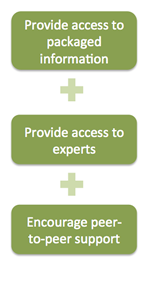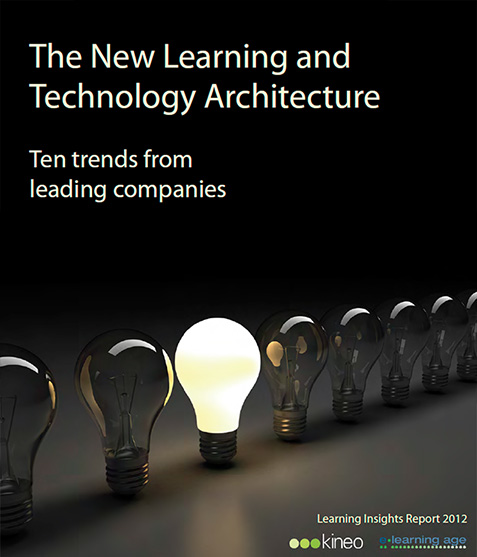Learning Insights Report 2012 — from Kineo and elearningage.co.uk
.
Actual report here:




An à la carte Apple TV concept integrates Siri, FaceTime, and cable/satellite providers (Gallery) — from 9to5mac.com by Jordan Kahn
Example “screenshots” from this concept:
.
Also see:
From DSC:
This relates to what I’m calling “Learning from the Living [Class] Room”
.
![The-Living-Class-Room-Daniel-S-Christian---July-2012 The Living [Class] Room -- by Daniel Christian -- July 2012 -- a second device used in conjunction with a Smart/Connected TV](http://danielschristian.com/learning-ecosystems/wp-content/uploads/2012/07/The-Living-Class-Room-Daniel-S-Christian-July-2012.jpg)
Learning in a Social Organization (LISO): a clickable guide — from by Jane Hart
From DSC:
A great picture of a dynamic, active, practical, constantly-changing, learning ecosystem:
The new workplace — from internettime.com by Jay Cross
Excerpt (emphasis by DSC):
Six years ago few people believed that informal learning made much of a difference. Today’s common wisdom is that most workplace learning is experiential, unplanned, social, and informal.
Informal learning tops many training department agendas. Companies are attracted by the low price tag. However, few of them are doing much systematically. They’ve converted a few programs but they’ve failed to improve their learning ecosystems.
We’ve shifted how we think about learning since the Informal Learning book came out. It’s a new ball game and we need to play by new rules. Consider what’s changed…
From DSC:
If this is the case, what could/should that mean for those of us working within higher education?
Survey shows people take training as infrequently as they go to a conference; but they learn continuously in other ways — from Learning in the Social Workplace by Jane Hart
Excerpt:
Although there are probably few surprises in the responses to the four main questions themselves, it is when you view the amalgamated results that you can see the bigger picture.
Addendum on 5/17/12 from Learning TRENDS by Elliott Masie – May 9, 2012 | #722 – Updates on Learning, Business & Technology.
Results of Learning Directions Pulse Survey
* 33% of organizations reported they are SHRINKING the use of face-to-face classrooms.
* Greatest planned growth in learning activity mode is in the use of Webinars.
* Strongest interest in change and updates was in Leadership Development.
* While 40% show a strong interest in Social Learning – only 20.1% plan a growing utilization with a strong piloting base.
* Mobile and Tablet Device use for Learning is being piloted by 30.1%
A Communiqué from the Horizon Project Retreat [2012]
Building on ten years of research into emerging technology in education
Excerpt:
From these discussions, 28 hugely important metatrends were identified. The ten most significant are listed here and will be the focus of the upcoming NMC Horizon Project 10th Anniversary Report:
These metatrends are the first of much yet to come in the next year. Watch NMC.org for news and more throughout the Horizon Project’s 10th Anniversary. To be part of the discussions, follow #NMChz!
Insights from #DevLearn 2011 — from Paul Simbeck Hampson
Social media and its impact on how we learn in the workplace — from C4PLT by Jane Hart
From DSC:
One reflection that jumped out at me from Jane’s excellent presentation…and that I believe is a universal truth:
If an organization doesn’t respond to changing conditions, needs, desires, preferences, best interests, and/or the requirements of its customers, that organization will diminish in usefulness and will most likely (albeit eventually) go out of business.
I know I’m not introducing a new thought here and the above statement seems very self-evident, but do we heed this advice in corporate L&D? Corporate IT? IT within higher education? In higher education as an industry?
The Smart Worker: Learning continuously with social media — from Jane Hart
Also see:
Why we need less instruction — from Clive on Learning by Clive Sheperd
Excerpt:
Another reason you might back away from instruction as a strategy is because it is more efficient to provide how-to materials at the point-of-need – it isn’t learning that’s required, it’s performance support:

Daniel Christian:
A Vision of Our Future Learning Ecosystems
In the near future, as the computer, the television, the telephone (and more) continues to converge, we will most likely enjoy even more powerful capabilities to conveniently create and share our content as well as participate in a global learning ecosystem — whether that be from within our homes and/or from within our schools, colleges, universities and businesses throughout the world.
We will be teachers and students at the same time — even within the same hour — with online-based learning exchanges taking place all over the virtual and physical world. Subject Matter Experts (SME’s) — in the form of online-based tutors, instructors, teachers, and professors — will be available on demand. Even more powerful/accurate/helpful learning engines will be involved behind the scenes in delivering up personalized, customized learning — available 24x7x365. Cloud-based learner profiles may enter the equation as well.
The chances for creativity, innovation, and entrepreneurship that are coming will be mind-blowing! What employers will be looking for — and where they can look for it — may change as well.
What we know today as the “television” will most likely play a significant role in this learning ecosystem of the future. But it won’t be like the TV we’ve come to know. It will be much more interactive and will be aware of who is using it — and what that person is interested in learning about. Technologies/applications like Apple’s AirPlay will become more standard, allowing a person to move from device to device without missing a beat. Transmedia storytellers will thrive in this environment!
Much of the professionally done content will be created by teams of specialists, including the publishers of educational content, and the in-house teams of specialists within colleges, universities, and corporations around the globe. Perhaps consortiums of colleges/universities will each contribute some of the content — more readily accepting previous coursework that was delivered via their consortium’s membership.
An additional thought regarding higher education and K-12 and their Smart Classrooms/Spaces:
For input devices…
The “chalkboards” of the future may be transparent, or they may be on top of a drawing board-sized table or they may be tablet-based. But whatever form they take and whatever is displayed upon them, the ability to annotate will be there; with the resulting graphics saved and instantly distributed. (Eventually, we may get to voice-controlled Smart Classrooms, but we have a ways to go in that area…)
Below are some of the graphics that capture a bit of what I’m seeing in my mind…and in our futures.
Alternatively available as a PowerPoint Presentation (audio forthcoming in a future version)










— from Daniel S. Christian | April 2011
Addendum on 4-14-11:

